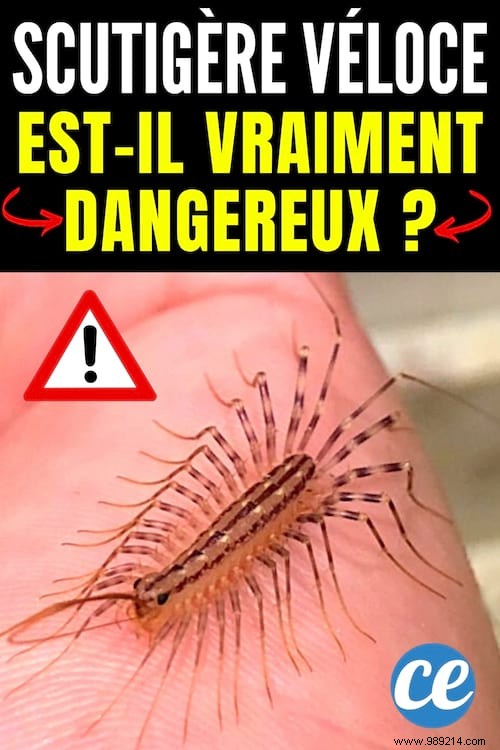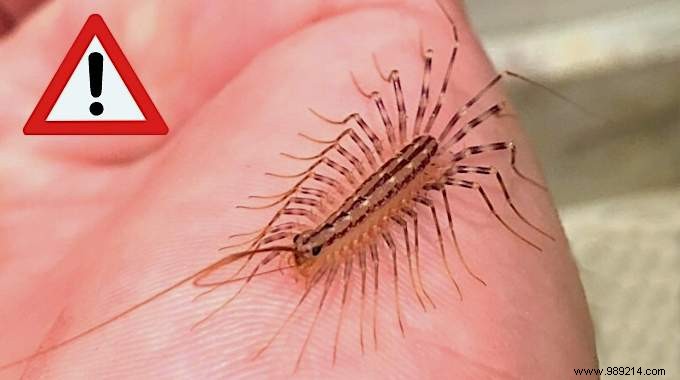
Today I'm telling you about a pretty terrifying centipede and fast called scutigera swift.
This unsightly-looking myriapod (centipede) likes to stay in domestic places.
You can therefore come across one at home in dark and humid rooms such as cellars, but not only!
But if its appearance is scary, should we really fear this centipede?
Because like all beasts not very appetizing, we imagine a lot of things about them which are often false....
So to help you not jump to the ceiling if you see any, I'll explain everything about this critter.
Let's see together if the centipede is dangerous and if we should get rid of it. Watch:
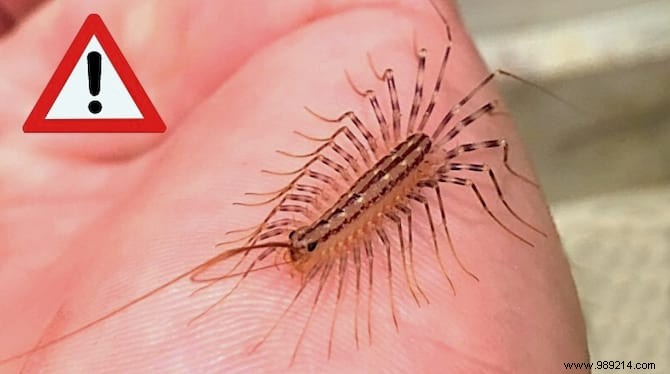
I can explain to you in great detail what a centipede is.
You know why ? Because I ran into him not long ago!
He gave me so many chills that I can't forget what he looks like.
It is called a centipede, but in reality it has only 15 pairs of long, thin legs.
This does not prevent this critter from being fast, very very fast even.
It is not for nothing that it is called swift, moreover; catching it is next to impossible.
It also has 2 very long antennae on its head and 2 long appendages on the back.
Most centipedes are yellowish gray with purplish bands.
They have stripes down the length of their body and down their legs.
Well we're not going to lie to each other:they are disgusting.
In any case, I was not showing off in front of this beast of about ten centimeters.
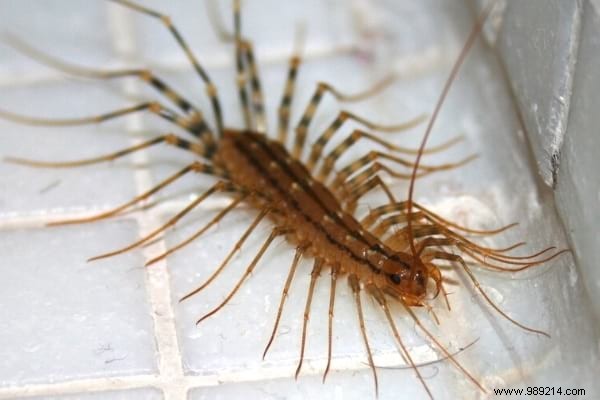
As soon as you see a centipede, the first instinct you have is to want to crush it with your shoe.
Don't do that!
Already because having a dying centipede corpse on the ground attracts other little creatures.
But mostly because this centipede, like most other insects, actually has A UTILITY .
So, against all odds, having a centipede at home is actually quite a good thing!
And I explain why below:
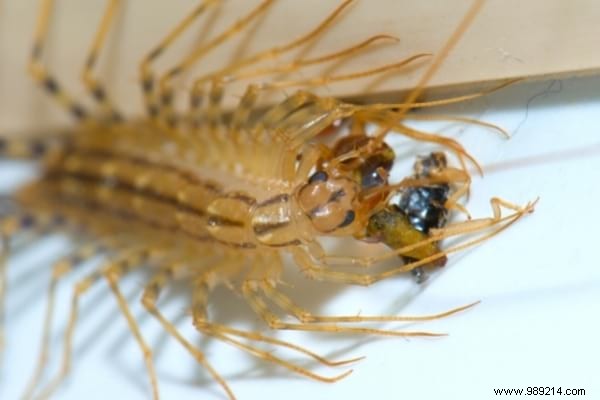
Understanding what these centipedes eat is understanding why they are useful.
The centipede is indeed known to kill the most unwanted pests of home and garden.
It likes to feed on Cockroaches, moths, flies, ants, termites and many other food...
And for that, the swift centipede has its own attack technique.
With its 2 legs located near its head, it catches its prey and injects its venom.
He then imprisons it with the rest of his legs; this is called the "lasso" technique.
The centipede jumps on its prey, rolls it up with its many legs and then paralyzes it.
The centipede is therefore a natural predator that kills the insects you don't want to see at home!
These centipedes are considered active hunters and are constantly on the lookout for prey.
In addition, they do not create nests or webs; they are therefore very discreet in the house.
They also don't eat your wood or carry diseases that kill humans.
These domestic centipedes simply prey on insects.
With them, you no longer need harmful insecticides, whether in your home or in your garden.
You see; behind this filthy facies hides a very useful animal!
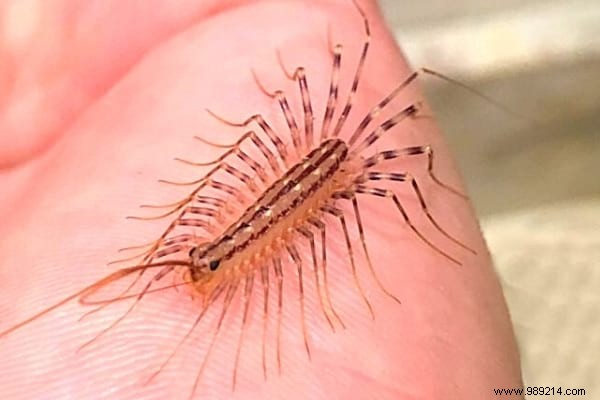
Although surprising when it comes out at full speed under a kitchen cabinet, the centipede is not dangerous.
This critter would much rather reserve its venom for insects than for us.
But be careful, even if they are harmless to humans, I advise you not to handle one.
Its bite is indeed particularly painful!
If you are bitten, it causes a reddish bump that hurts quite a lot, but it is of no consequence.
Only people who are particularly sensitive to bee stings could cause an allergy.
In this case, direction to the doctor.
But rest assured, in most cases people feel no effect after biting.
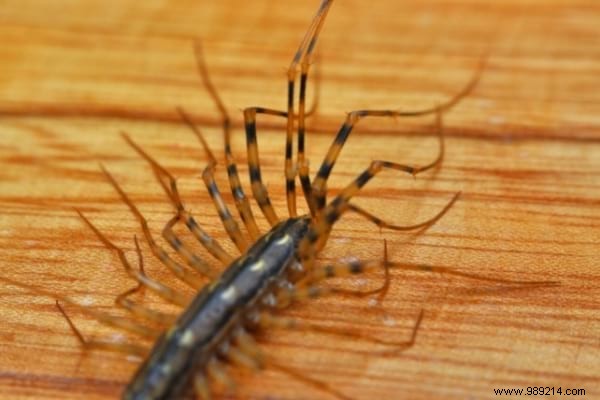
Even though centipedes have their uses and aren't dangerous, I understand why we want to get rid of them.
To do this, you have to understand what attracts them:it's simply FOOD.
So the only trick to permanently eliminate their presence, is to make their food disappear.
The household pests on which they feed must be eradicated.
So be sure not to attract flies, spiders, mosquitoes and other victuals to your home.
The centipede also strongly appreciates humidity and heat.
Places like the bathroom, boiler room or cellar are his favorite landmarks.
It therefore does not like places that are too dry.
Do you see where I'm coming from?
You have to do everything to fight humidity in your home .
To do this, do not hesitate to equip yourself with a dehumidifier and to ventilate your bathroom well.
Also make your VMC work well so as not to create mold in your home.
Also plug all the cracks that give access to the house.
This way, these pests have no breeding ground to lay their eggs.
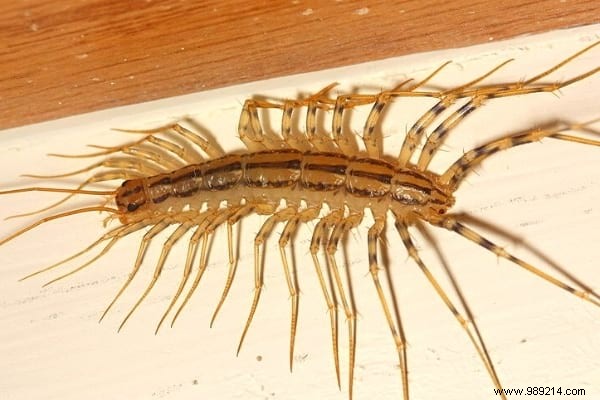
Once you've taken all the precautions we just talked about...
...you surely don't want to see these critters coming home!
To never encounter one of these creepy centipedes again, you must therefore keep them at a distance.
You can use these natural solutions for this or simply white vinegar.
Diatomaceous earth is also a way to scare away these beasts.
Sprinkle it in all places of passage and in all slightly damp corners.
To treat walls and less accessible places, you can even create a homemade solution.
In a container, pour 1 liter of water and dilute 300 to 500 g of diatom powder in it.
Pour this mixture into a spray bottle and spray the areas to be treated with it.
After projection, the water evaporates while the diatom particle remains attached.
It has the effect of dehydrating the centipede, which causes it to die.
You see, no need to use chemicals!
